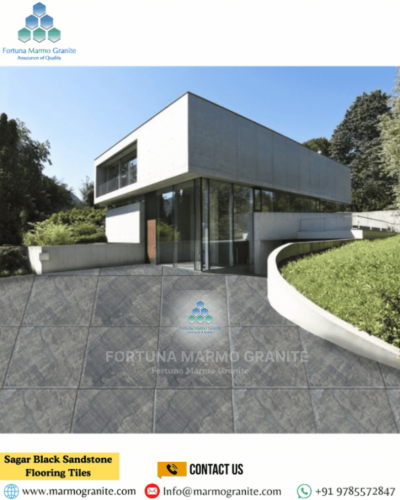Sandstone Paving for Gardens and Pathways: Classic, Natural, Enduring


Enduring Beauty: The Durability of Sandstone
One of the strongest reasons to choose sandstone for gardens and pathways is its durability. Formed under immense pressure, sandstone is naturally robust and built to endure outdoor conditions. It resists extreme temperatures, heavy foot traffic, and daily wear and tear. With proper installation and care, a sandstone patio or pathway can last for decades, becoming a cherished part of your home for generations.
Unlike many man-made materials that fade or degrade, sandstone improves with age. Over time, it develops a subtle patina that enhances its beauty and gives it a sense of history. This graceful aging reflects its natural origin and makes sandstone an eco-friendly choice, as it rarely needs replacement.
Classic Design Versatility: From Formal to Free-Flowing
The versatility of sandstone in terms of design is another significant advantage. Its classic appeal allows it to adapt effortlessly to various garden styles, offering a foundation that can be both formal and free-flowing.
For a traditional or formal garden, sawn sandstone paving with clean, straight edges can create a sophisticated and structured look. Laid in a regular pattern, such as a stretcher bond or a basketweave, it establishes a sense of order and elegance, perfect for grand patios or stately walkways. The precise cuts of sawn sandstone highlight its natural variations within a more defined framework, creating a refined aesthetic.
Conversely, for a more relaxed or rustic garden, tumbled or hand-cut sandstone with irregular edges creates a charming, old-world feel. When laid in random patterns with wider joints, it blends seamlessly into the landscape and mimics the organic forms of nature. This style works well for winding garden paths, informal seating areas, or stepping stones through a lawn.
The slightly distressed edges of tumbled sandstone enhance its character, giving it a weathered, lived-in appearance. Designers can also combine sandstone with other materials to create striking visual effects. For example, when interspersed with gravel, it creates a permeable pathway that improves drainage. If bordered with brick or timber, it defines spaces and adds contrasting textures.
Installation Considerations: Laying the Foundation for Beauty
While sandstone paving is naturally durable and visually appealing, its long-term performance depends on correct installation. For large-scale projects such as patios, driveways, or commercial spaces, it is best to hire experienced professionals who understand the technical aspects of working with natural stone.
One of the most critical steps in the process is preparing a strong foundation. A compacted sub-base made of MOT Type 1 hardcore ensures stability and helps prevent issues like sinking or shifting.
Jointing also plays a vital role in durability and appearance. Traditional mortar pointing creates a classic finish, while modern resin-based compounds provide flexibility, water permeability, and easy maintenance. Proper jointing reduces slab movement, blocks weed growth, and enhances the overall look of the paving.
Caring for Your Sandstone: Simple Steps for Lasting Beauty
Regular Sweeping: This is the simplest yet most effective maintenance step. Sweeping removes dirt, leaves, and debris before they break down and stain the surface.
Occasional Washing: For deeper cleaning, use a pressure washer on a low setting or scrub with warm, soapy water and a stiff brush. Avoid harsh chemical cleaners, as they can damage the stone. For stubborn stains, use specialized stone cleaners, but always test them on a hidden area first.
Sealing: While not always essential, sealing sandstone is highly recommended in areas exposed to spills or heavy foot traffic. A high-quality impregnating sealer creates an invisible barrier against water and stains while still allowing the stone to breathe. Reapply every few years, depending on the product and exposure, to maintain protection.
Conclusion
In conclusion, sandstone paving is one of the most elegant and enduring choices for outdoor landscapes, especially gardens and pathways. Its timeless charm comes from earthy colors, natural textures, and an organic finish that blends seamlessly with nature. These qualities create calm and visually pleasing spaces. The wide color range—from soft beige and warm browns to bold greys and rich reds—offers endless options. This versatility allows homeowners, architects, and designers to craft personalized looks that highlight a property's natural beauty. Furthermore, the adaptability of sandstone in both contemporary and traditional settings makes it a versatile material for diverse design needs.
At Fortuna Marmo Granite, we understand the lasting value and architectural charm sandstone brings to outdoor projects. That's why we are dedicated to offering only the finest quality sandstone paving stones, sourced responsibly and processed with precision. As a well-established Indian sandstone supplier and exporter, we provide an extensive range of sandstone tiles and slabs in various sizes, textures, and finishes to suit every garden and pathway requirement. Our commitment to quality, sustainability, and craftsmanship ensures that every piece of sandstone we deliver not only meets global standards but also exceeds client expectations. With our expert support and wide export network, we at Fortuna Marmo Granite are proud to help transform outdoor spaces across the world into timeless works of natural art.

